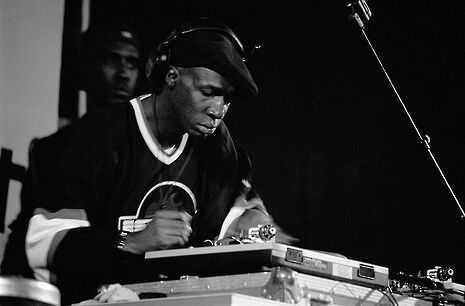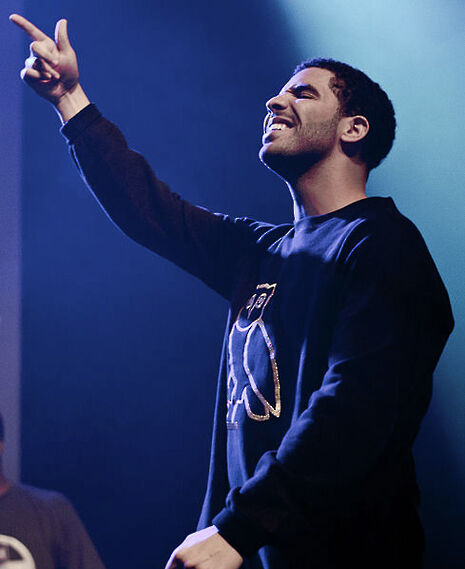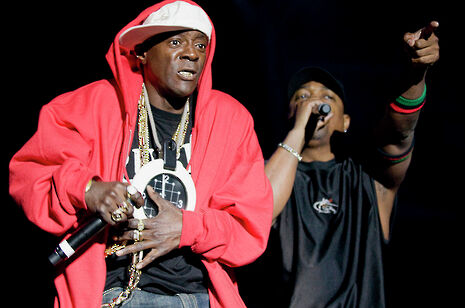Sampling: music’s most maligned art
The technique isn’t going away anytime soon, says Ian Wang

Last month, Neil Cicierega released an album called Mouth Moods. Cicierega’s name may be unfamiliar to you, but his work almost certainly is not. He created the wildly popular Potter Puppet Pals web series, as well as a slew of quirky viral videos and songs (‘Brodyquest’, ‘The Ultimate Showdown’, ‘Bustin’). Mouth Moods, his latest project, is the third in a series of comedy mashup albums named after the band Smash Mouth, whose song ‘All Star’ recently went from the relatively innocent territory of the Shrek soundtrack to an endless churn of increasingly bizarre memes.
On his mashup albums, Cicierega embraces the irreverence and eccentricity of a growing online subculture. His song combinations are gleefully provocative, mixing lowbrow pop tunes like ‘All Star’ with venerated classics such as John Lennon’s ‘Imagine’ (a mashup that has to be heard to be believed). On other tracks, he pokes fun at the overwrought seriousness of songs like ‘In the End’ by Linkin Park by pairing them with upbeat funk instrumentals, or conversely bringing new profundity to supposedly trashy songs like Village People’s ‘YMCA’ by laying them atop the dramatic strings of Hans Zimmer’s Inception soundtrack.
Cicierega’s musical blasphemy might be a purely comedic enterprise, but the techniques he’s using – taking existing musical (or non-musical) material and reusing, manipulating and experimenting with it – form the basis of much of modern pop music. From the rudimentary drum loops of old school hip hop to the digitally-edited samples of contemporary dance, musicians have been using other people’s work in their own songs for decades, and that tradition has spawned some of the freshest, most innovative artists and styles in the history of pop music.
Sampling – the act of taking and reusing snippets of recorded audio in music – began life in the 1970s at block parties in the Bronx where DJs like Grandmaster Flash and DJ Kool Herc would isolate drum breaks (brief drum solos in the middle of songs which were popular with dancers) by lining up the same section of a record on two different turntables. When one break finished, they’d quickly switch over to the other turntable and keep the break going. When it came to the early days of commercial rap music, that technique of a looping drum pattern stuck, and sampled drum loops continue to be a mainstay of modern hip hop production.
This form of sampling was strictly analogue. If you wanted to record a song with a section of someone else’s, you’d either need a DJ working the turntables while you were recording, or someone actually playing that section for you. Sugarhill Gang’s ‘Rapper’s Delight’ famously features the bassline from Chic’s ‘Good Times’, but to achieve that the group had to hire a session musician to actually play the bassline in person. It wasn’t until the 1980s, when sampling keyboards like Fairlight’s Computer Musical Instrument (CMI) took off, that sampling became easier. With devices like the CMI, you could record the section of music you wanted and then reuse it as many times as you wanted.
Sampling quickly became a popular production technique, and its use only intensified as digital musical production technology became increasingly advanced. Soon, producers could create entire tracks using a single piece of hardware, as personal computers became the digital audio workstations that the vast majority of producers use. Nowadays, sampling is everywhere, even if we’re not always aware of it. You’ve probably heard ‘Hotline Bling’, but you may not know is that its instrumental is almost entirely based on a sped-up sample from Timmy Thomas’s ‘ Why Can’t We Live Together’.

What’s more, as sampling has become more and more accessible, producers have found increasingly creative ways to use it. Pitch-shifting is one popular method of manipulating samples – Kanye West first made his name as a producer of “chipmunk soul” tracks like ‘Through the Wire’, where the instrumental would be driven by a sped-up soul or R&B sample. The source material used for samples has also become increasingly left field – Australian musician Pogo gained online popularity for tracks built almost entirely around samples from Disney movies, and Seattle rap group Clipping trade traditional drum samples for the sounds of alarm clocks, thermos flasks and gunshots.
Sampling isn’t without its detractors. Critics argue that since it relies on taking other people’s work, often without credit, sampling isn’t really any different from stealing. You can see their point – if someone’s worked hard to create an original composition, isn’t it unfair to take their idea, dress it up a bit and pass it off as your own? In some cases, samples that the original artists were unhappy with have resulted in legal battles. MC Hammer, for example, was sued over the Rick James sample in his signature song ‘U Can’t Touch This’. Many artists have sidestepped the issue by doling out large sums of money to pay as royalties to the original artists or by giving them songwriter credits, but even that hasn’t been enough to silence the harshest critics who believe the taking other people’s work is inherently lazy and unoriginal.
“There's an art in picking, say, exactly the right bassline and pairing it with the perfect strings or drumbeat”
Everyone has their own perspectives on this issue, but personally I think it’s undeniable that a lot of sampled music is incredibly creative. Take artists like The Avalanches or J Dilla, whose music combines a vast and eclectic library of samples to create rich, lush soundscapes that you could never imagine just by listening to each sample individually. They may not record the samples themselves, but nonetheless there’s an art in picking, say, exactly the right bassline and pairing it with the perfect strings or drumbeat, continually layering new sounds on top until you have a whole symphony of samples all playing at once and somehow working in perfect harmony.

Admittedly, a lot of artists aren’t mashing together a lot of different sounds. Many songs use only one or two samples. But even then, when you take an existing song and change the context – maybe you’re using it in a radically different genre, or you’re packaging it in a totally different set of aesthetic values – you imbue that song with new meaning. Diana Ross’s ‘It’s Your Move’, for example, feels totally different when it’s paired with the absurdly retro computer graphics and strange hyperreality of Macintosh Plus.
It’s also worth remembering that samples don’t necessarily have to be musical – everything from movie dialogue to political speeches has been turned into a sample. These samples, which often open up tracks, seem to serve the same purpose as epigraphs, those quotes you see at the start of novels, by setting the tone for the rest of the track and giving you a sense of what the artist is trying to convey. The sample of Malcolm X saying “Too black, too strong”, which opens Public Enemy’s incendiary ‘Bring the Noise’, sums up frontman Chuck D’s political mission statement, while the vocal samples scattered throughout Paul Hardcastle’s anti-war song ‘19’ emphasise the horror of the Vietnam War.
The samples themselves might not be original, but the ways that musicians are using them certainly are. And one of the great things about sampling is that the more original music there is out there, the more there is to sample, so there’s an almost infinite variety of possible combinations and reinterpretations. Sampling isn’t going to go away anytime soon, and with luck it’ll continue to be a technique that drives pop music forward in new and exciting directions
 Comment / Plastic pubs: the problem with Cambridge alehouses 5 January 2026
Comment / Plastic pubs: the problem with Cambridge alehouses 5 January 2026 News / Cambridge academics stand out in King’s 2026 Honours List2 January 2026
News / Cambridge academics stand out in King’s 2026 Honours List2 January 2026 News / Cambridge businesses concerned infrastructure delays will hurt growth5 January 2026
News / Cambridge businesses concerned infrastructure delays will hurt growth5 January 2026 News / AstraZeneca sues for £32 million over faulty construction at Cambridge Campus31 December 2025
News / AstraZeneca sues for £32 million over faulty construction at Cambridge Campus31 December 2025 Interviews / You don’t need to peak at Cambridge, says Robin Harding31 December 2025
Interviews / You don’t need to peak at Cambridge, says Robin Harding31 December 2025









